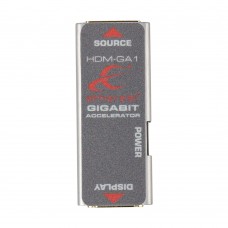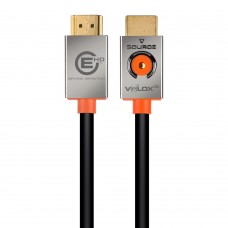A Storm is Brewing for HDR
Wednesday, January 20, 2016 2:24:38 AM America/New_York

High Dynamic Range (HDR) is an advancement in picture quality that will quickly find a market. It will change the AV industry more than any other display technology that has debuted in the last few years. The upgrade to HDR is easy to see by the customer and will establish a foothold in the market quickly due to its stunning dynamic range of brightness — like really, really stunning. HDR creates pictures in the same way that the human eye does and makes videos come to life with shadows and shading details the likes of which we have never seen on other displays. Viewers can instantly notice the difference and begin imagining it in their homes and businesses. Yet, we are facing one problem to implementing HDR — this upgrade has a lot of technology behind it that will not be understood by everyone.
The most prominent issue is that HDR requires the maximum bandwidth specified in the HDMI® 2.0 spec — up to 18Gbps for support of the full–color spectrum and detail it provides. The components, the cables and accessories must all meet the full specification. The problem is that HDMI products can legally state, “supports HDMI 2.0” when they only fall into the minimum specification range of HDMI 2.0 under 10.2Gbps making them unable to support the bandwidth requirement for HDR. Making it even more complicated is that the hardware specification for HDR is HDMI 2.0a. Luckily, making the move from HDMI 2.0 to 2.0a is going to be done with a firmware upgrade on most devices. Therefore, the products that only meet the HDMI 2.0 minimum–specification will not support HDR.

Both end users and integrators will need to educate themselves and ask questions to make sure the correct products are purchased to produce HDR video. Finding the right products will be a challenge at first, and take some time, yet it will happen because the consumer will demand it. HDR demand will be driven by the 3D–like quality of the HDR display and customers want the latest in TV technology. Unlike the HD launch, with its variety of resolutions, HDR will hit the ground running. In comparison to the HD transition, customers could not easily see the upgrade with a 720i display and it took years for 1080p content to be released. High Definition television was developed by CEA and the FCC, many times before the complete spec was defined and this delay gave old products an extended life. HDR technology is different because upon deployment most of the specification had been defined with multiple video companies releasing HDR capable hardware this holiday season. Netflix and Rogers Cable (Canada) have HDR content currently in the works. This content will contribute to drive the demand for HDR. A perfect storm is building and it will leave destruction in its wake — and a world of opportunity for integrators.

This storm will leave some manufacturers with obsolete product on the shelf due to HDR’s full HDMI 2.0a spec requirement. In the past, HDMI products were phased out gradually over time with overlapping specs so the old could sometimes work with the new. HDR is a bomb that will have an immediate impact due to available HDR streaming content and the retail customers’ demand. HDR’s visual details and benefits are easily seen. Streaming companies can start charging more for HDR content just like they are already starting to do with 4K and customers will pay to have the latest and greatest in picture quality. This push will leave those manufacturers that have not engineered their products for the full HDMI 2.0a spec out in the cold. Only a handful of manufacturers have met the new specs for HDR and it will become pretty clear who they are once the spec questions are asked by both integrators and end–users.
HDR is going to shake up many manufacturers relying on HDMI cable as opposed to other options like DisplayPort or Smart Displays directly connected to the network. It will separate the men from the boys much more than the emergence of HDTV did. We are already seeing major price drops in current display technologies because of this upcoming change. Customers and dealers are quickly going to find out which companies have invested the time and money into R&D to future–proof their products once the questions are asked and field tests begin. HDR will change the face of the AV industry and only the well prepared will be left standing.
Shop now for Velox Cables or The Gigabit Accelerator.











